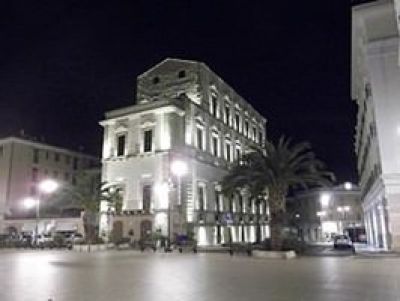Margaret of Austria is a woman with a strong and tenacious personality. She can be placed on the list of influential women of modern history. She comes from two Italian well-known families, united in marriage with Alexander of Medici and Octavius Farnese. She then becomes the Duchess of Florence, Parma, and Piacenza. Thanks to her, we have beautiful architectural structures scattered around Italy.
Margaret of Austria is the granddaughter of Margaret of Habsburg of the Netherlands, for whom she is named. She is the illegitimate child of Carlo V of Habsburg. She was still recognized by the emperor as the daughter, so she is considered a true princess. Carlo received the fiefdoms of the Abruzzo states from his father as an inheritance.
Margaret was a widow and in 1538 she remarried for the second time to Octavius Farnese, who is the grandson of Pope Paul III. She has two children with him although she refuses to live with him. In fact, she moves first to Rome to the Medici Palace, which is later renamed to be the Madame Palazzo. This new name is because she chose to be called Madame. Today, the palace is home to the Senate of the Republic. In 1559, she then moved to Piacenza, where she lived in the Farnese Palace.
Margaret of Austria chose to live her last years of life in the fiefdoms of the Abruzzi States, which is between Cittaducale and Aquila. In 1582, she decided to acquire Ortona, and she ordered the building of a new home, the Farnese Palace. For this reason, we see the grand architectural beauty in Ortona and in Aquila to this day.
The Palazzo Farnese in Ortona was built by James of the Door, an artist. It was built in 1584 on a hill that overlooks the Adriatic Sea. On the day that the foundations were constructed, she threw three bronze coins in each corner of the building. At one point in history, the coins were found, but now they have disappeared.
Ortona, during this time, was the center of both political and economic importance. With the building of this dramatic Farnese Palace, it was revolutionary to the town mostly because it changed the town’s overall appearance. Unfortunately, Margaret of Austria never got to see the end of construction because she died in 1586. The palace remained incomplete. Today, the Farnese Palace is the home of the Museum of Contemporary Art.
Margaret of Austria was also the governor of Abruzzi. She was a leading entrepreneur in her time, and she was successful in the revitalization of both the economic and political scenes in the Abruzzo region. Nowadays, in Aquila, these scenes are still linked together. At that time, Aquila experienced a strong Rebirth because at the Margaret Palace (or Madame Palace), poets, singers, sculptures, writers, and philosophers were all brought together.
In Abruzzo, there are roads, streets, and piazzas dedicated to Margaret of Austria along with the Regional Reserve of Mountains of the Duchess. This reserve is a protected natural area in Abruzzo that has more than 500 species of vegetables, 227 species of insects, 9 species of amphibians, 10 species of reptiles, 97 species of birds, and 38 species of mammals.
Le nobiltà d’Abruzzo: Margherita d’Austria
Margherita d’Austria è una donna dal carattere, forte e tenace, rientra nella lista delle donne più influenti della storia moderna. Fa parte di due celebri casate italiane, si unisce in matrimonio con Alessandro dè Medici e Ottavio Farnese. Diventa Duchessa di Firenze, Parma e Piacenza. Grazie a lei abbiamo delle bellissime testimonianze architettoniche sparse in Italia.
Margherita d’Austria è nipote di Margherita d’Asburgo dei Paesi Bassi, dalla quale, prende il nome, è figlia illegittima di Carlo V d’Asburgo. Viene però riconosciuta dall’Imperatore e quindi riceve un’istruzione da vera principessa. Riceve dal padre come eredità i Feudi degli Stati d’Abruzzo.
Rimane vedova e nel 1538 sposa in seconde nozze Ottavio Farnese nipote di Papa Paolo III, dal quale ha due figli, ma si rifiuta di vivere con il consorte. Infatti, si trasferisce prima a Roma al Palazzo Medici che viene poi nominato Palazzo Madama, perché lei si fa chiamare per l’appunto Madama. Oggi il palazzo ospita il Senato della Repubblica. Nel 1559 si trasferisce a Piacenza dove abita nella sua residenza Palazzo Farnese.
Margherita d’Austria sceglie però di trascorre gli ultimi anni della sua vita nei Feudi degli Stati d’Abruzzo tra Cittaducale e l’Aquila. Nel 1582 decide di acquistare Ortona e far edificare la sua residenza, Palazzo Farnese. È per questo motivo che in Abruzzo possiamo trovare testimonianze di grande bellezza a Ortona e l’Aquila.
Il Palazzo Farnese presente a Ortona viene edificato dall’artista Giacomo della Porta. L’edificio viene edificato nel 1584 sopra un colle che domina il mare Adriatico. Il giorno in cui vengono buttate giù le fondamenta Margherita d’Austria fa coniare tre monete speciali in bronzo e le butta sotto ogni angolo della costruzione. Queste monete furono ritrovate in un secondo momento, ma poi sono andate disperse.
Ortona all’epoca è una cittadina non al centro di importanza politica ed economica e la costruzione imponente del Palazzo Farnese è una rivoluzione, perché cambia l’aspetto del paese. Purtroppo, Margherita d’Austria non vede la conclusione dell’opera perché muore nel 1586 e il palazzo è ancora incompiuto. Oggi il Palazzo Farnese è sede di un museo di arte Contemporanea.
Margherita d’Austria governatrice degli Abruzzi, è una vera imprenditrice dell’epoca e riesce a rilanciare l’economia e la politica della regione Abruzzo. In particolare, nella città dell’Aquila, a cui è legata particolarmente. In quel periodo l’Aquila vive un forte Rinascimento. A Palazzo Margherita o Madama vengono riuniti: Poeti, cantori, musicisti, scultori, letterati e filosofi.
In Abruzzo a Margherita d’Austria sono dedicate vie, strade e piazze insieme alla Riserva regionale Montagne della Duchessa. Un’area naturale protetta con più di 500 specie vegetali, 227 specie di insetti, 9 specie di anfibi, 10 specie di rettili, 97 specie di uccelli e 38 specie di mammiferi.



